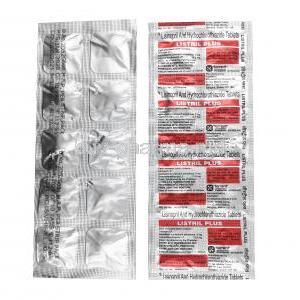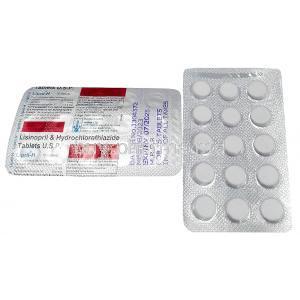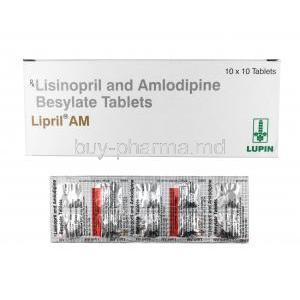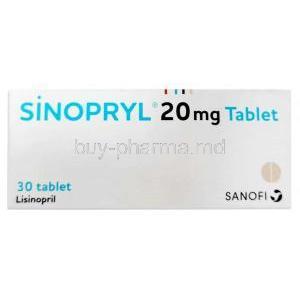Enalapril
- I. Introduction to Enalapril
- II. Detailed Composition of Enalapril
- III. Understanding How Enalapril Works
- IV. Clinical Uses of Enalapril
- B. Off-Label Uses
- V. Dosage and Administration Guidelines for Enalapril
- VI. Special Administration Considerations
- VII. Potential Interactions with Enalapril
- VIII. Side Effects Associated with Enalapril
- IX. Warnings and Contraindications for Enalapril
- X. Handling an Overdose of Enalapril
- XI. Enalapril Storage and Handling Precautions
I. Introduction to Enalapril
A. Origin and Development
B. Common Uses and Applications
Enalapril has been extensively studied and found to be highly effective in treating a range of cardiovascular conditions. One of its primary applications is managing hypertension by dilating the blood vessels. Enalapril helps to lower blood pressure. It reduces the strain on the heart. This not only improves cardiovascular health but also enhances overall well-being. Additionally, Enalapril is commonly used in treating heart failure by addressing this condition's underlying causes and symptoms. Enalapril helps to improve heart function and alleviate discomfort. This can significantly improve the quality of life for individuals living with heart failure. Furthermore, Enalapril has demonstrated promising results in protecting kidney function in individuals with diabetes. It has been shown to prevent or slow down kidney damage associated with this disease, given the importance of preserving renal health for those with diabetes. Enalapril offers potential benefits that should not be overlooked. In conclusion, Enalapril's effectiveness and versatility make it a valuable tool in managing various cardiovascular conditions. From hypertension to heart failure and diabetic kidney damage prevention, this medication has proven effective in improving health outcomes for patients across different contexts and needs.
C. Overview of Mechanism of Action
Enalapril possesses a distinctive mode of action as it acts as an inhibitor for Angiotensin Converting Enzyme (ACE), a key component within the Renin Angiotensin Aldosterone System (RAAS) that governs blood pressure. ACE is pivotal in converting angiotensin I to angiotensin II, a potent vasoconstrictor. By blocking ACE, enalapril interrupts this conversion process and promotes vasodilation, leading to reduced blood pressure and alleviating strain on the heart.
II. Detailed Composition of Enalapril
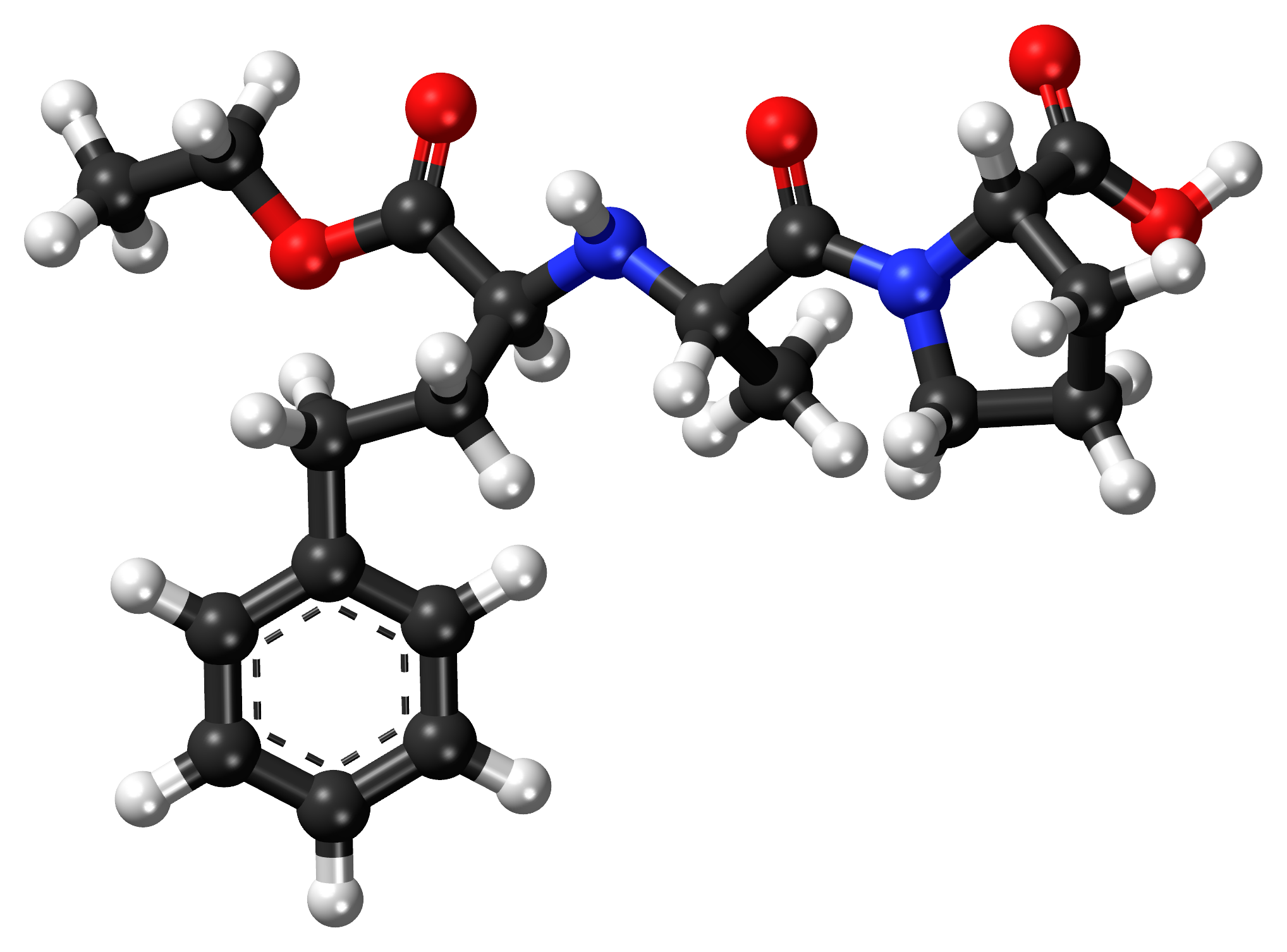
A. Active Ingredient
Enalapril is a medication that contains Enalapril Maleate as its active ingredient. When taken orally, this prodrug undergoes hydrolysis in the liver resulting in the production of Enalaprilat, which is the active metabolite. The desired therapeutic effects are achieved through the interaction of Enalaprilat with the body's physiological systems.
B. Excipients and Co-formulants
Enalapril tablets are formulated with various excipients and co-formulants to ensure they are both practical and safe for consumption. These include binders, disintegrants, fillers, and coating agents. The commonly used substances are microcrystalline cellulose, lactose, and magnesium stearate. It is important to note that these components do not directly contribute to the therapeutic effect of the medication. They enhance its physical properties, stability, and overall taste.
C. Different Formulations Available
Enalapril offers a range of formulations to accommodate patients' various needs and preferences. These include oral tablets, which come in different strengths ranging from 2.5 mg to 20 mg, for individuals with trouble swallowing pills. There is also an oral solution available in liquid form. In specific hospital settings where oral intake is not possible. IV injection may be used, although it is less commonly utilized.
III. Understanding How Enalapril Works
A. Interaction with Angiotensin-Converting Enzyme (ACE)
Enalapril is a member of the ACE inhibitor drug class. Operates by engaging with Angiotensin Converting Enzyme to produce positive effects. Essentially. Enalapril blocks the enzymatic pathway and restricts the conversion of Angiotensin I into Angiotensin II, a potent vasoconstrictor. Consequently, this reduction in Angiotensin II levels leads to vasodilation, promoting smooth blood flow and reducing strain on the cardiovascular system.
B. Effect on Blood Pressure Levels
By exerting its inhibitory effect on Angiotensin II, Enalapril successfully diminishes the contraction of blood vessels. Consequently, this significantly lowers both systemic vascular resistance and blood pressure levels. This favorable outcome proves advantageous for cardiac health and offers protection to crucial organs such as the kidneys by reducing potential harm inflicted by elevated blood pressure.
C. Influence on Heart Function
Enalapril significantly affects heart function by interacting with the body's physiological systems. It achieves this by relaxing the blood vessels. Thus reducing the amount of effort required by the heart to pump blood. Furthermore, Enalapril helps alleviate fluid retention, a common problem in heart failure, as it hinders Angiotensin IIs' ability to retain sodium.
IV. Clinical Uses of Enalapril
A. Approved Uses
Enalapril's pharmacological properties render it an optimal medication for various clinical conditions. These encompass:
1. Hypertension
Enalapril proves remarkably effective in treating hypertension. Its ACE-inhibiting properties significantly reduce systemic vascular resistance resulting in a significant decrease in high blood pressure. This reduction is crucial in preventing severe complications like stroke, heart attack, and kidney disease. 123
References
- 1. "Antihypertensive drugs", NCBI, 2007.
- 2. "ACE Inhibitor and Angiotensin Receptor-II Antagonist: A Progression of Understanding", NCBI, 2012.
- 3. "ACE inhibitors: How they work to reduce high blood pressure", Mayo Clinic.
2. Heart Failure
Enalapril is frequently utilized as a fundamental treatment for heart failure. It effectively improves the heart's functioning by decreasing both pre-load and after-load. This, in turn, reduces the workload of the heart. Additionally, its capacity to minimize fluid accumulation also contributes to alleviating symptoms in individuals with heart failure. 123
References
- 1. "Current Role of Enalapril in Hypertension and Heart Failure", NCBI, 2015.
- 2. "ACE Inhibition in Cardiovascular Disease: End Points and Clinical Use", American Heart Association Journals, 2002.
- 3. "Enalapril (Oral Route)", Mayo Clinic.
3. Kidney Problems in Diabetes Patients
With its potent antihypertensive effects, Enalapril proves valuable in safeguarding the kidneys of individuals diagnosed with diabetes. The detrimental impact that high blood pressure can have on renal health over time raises severe concerns among diabetic patients. Thus, it becomes crucial to utilize medications like Enalapril that effectively slow down the progression of kidney disease in this specific population. 123
References
- 1. "ACE Inhibition in Diabetic Nephropathy", NCBI, 2010.
- 2. "Antihypertensive and Kidney Protective Effects of Angiotensin Receptor Blockers", American Heart Association Journals, 2003.
- 3. "ACE Inhibitors and ARBs: Keeping Your Kidneys Healthy", National Kidney Foundation.
B. Off-Label Uses
1. Migraine Prevention
While Enalapril is not primarily prescribed for migraine prevention, there are indications that it may hold potential in this area. The theory behind its efficacy lies in improving vascular health and ensuring smooth blood flow. It is potentially resulting in reduced migraine frequency and intensity. However, it is essential to recognize that scientific literature supporting this application remains limited. Consequently, it is crucial to consult with a healthcare professional before considering Enalapril for migraine prevention. 123
References
- 1. "Do Angiotensin-Inhibiting Drugs Improve the Outcome of Migraine?", PubMed, 2011.
- 2. "Possible Roles of Angiotensin-Converting Enzyme Inhibitors and Angiotensin II Antagonists in Migraine", Headache: The Journal of Head and Face Pain, 1999.
- 3. "The Use of Angiotensin-Converting Enzyme Inhibitors and Angiotensin Receptor Blockers in Acute and Preventive Migraine Therapy: A Review of the Literature", NCBI, 2012.
2. Heart Disease Prevention in High-risk Patients
Enalapril is frequently utilized as a safeguard measure for individuals with a heightened vulnerability to cardiovascular disease. Its mechanism entails lowering blood pressure and lessening cardiac strain while possibly impeding the further progression of atherosclerosis. As such, Enalapril has the potential to serve as an essential means to delay or prevent the onset of heart disease in susceptible individuals. 123
References
- 1. "Angiotensin-Converting Enzyme Inhibitors and Progression of Coronary Atherosclerosis", American Heart Association Journals, 2004.
- 2. "Angiotensin Converting Enzyme Inhibitor Has a Protective Effect on Coronary Atherosclerosis in Patients with Rheumatoid Arthritis: A Multicenter High-Resolution Coronary Intravascular Ultrasonic Imaging Study", NCBI, 2011.
- 3. "Influence of ACE Inhibitors on Clinical Outcome in Patients with Coronary Artery Disease", Journal of the American College of Cardiology, 2017.
3. Diabetic Nephropathy
Despite being an established therapy option for hypertension and heart failure indications, using Enalapril to address diabetic nephropathy falls within the realm of off-label utilization. Although physicians frequently incorporate it into treatment plans targeting this condition, regulatory agencies have not granted explicit endorsement specifically for these circumstances. Nevertheless, medical experts believe that effective blood pressure management via Enalapril can yield positive outcomes by reducing kidney damage in diabetic patients and potentially slowing down the progression of diabetic nephropathy. 123
References
- 1. "Prevention of Diabetic Nephropathy by Enalapril in Normotensive Diabetic Patients with Microalbuminuria", NCBI, 2014.
- 2. "Long-term stabilizing effect of angiotensin-converting enzyme inhibition on plasma creatinine and on proteinuria in normotensive type II diabetic patients", PubMed, 1997.
- 3. "Renoprotective Effect of the Angiotensin-Receptor Antagonist Irbesartan in Patients with Nephropathy Due to Type 2 Diabetes", The New England Journal of Medicine, 1997.
V. Dosage and Administration Guidelines for Enalapril
A. Initial Dosage and Titration
B. Maintenance Dosage
Once a stable and appropriate dose is achieved, the maintenance phase begins. In the case of hypertension, the usual maintenance dose ranges from 10 to 40mg per day. Either administered all at once or divided into multiple doses. As for heart failure, a typical range of 10 to 20mg per day is prescribed, usually given in two separate doses.
C. Factors Affecting Dosage
Dosage adjustments may need consideration based on several factors. These factors include the patients' age, medical conditions, concomitant medications, and kidney and liver function. It is essential to prioritize the key objective of discovering the minimal effective dose that accomplishes therapeutic goals while avoiding unfavorable side effects.
D. Special Instructions for Administration
It is permissible to ingest Enalapril regardless of whether food has been consumed prior or not. Establishing a consistent intake time each day is imperative to ensure constant blood levels. In situations where doses have been overlooked, promptly taking them once recollected (except when close to impending quantities) should be followed by patients. Resorting to compensate for an omitted dosage by doubling subsequent intakes must emphatically be avoided at all costs.
VI. Special Administration Considerations
A. Administration to Elderly Patients
Special consideration should be given to geriatric patients due to the physiological changes they experience, such as a decline in renal function. Therefore, it is essential to exercise caution when prescribing Enalapril to these individuals. It is advised to initiate treatment with a lower initial dose and closely monitor the patient's blood pressure: kidney function, and potential side effects. Adherence to the principle of "start low, go slow" is paramount in this population.
B. Administration to Pregnant Women and Nursing Mothers
Categorized as a medication falling within pregnancy category D Enalapril holds inherent dangers for fetal health - most notably during the latter stages of gestation. Accordingly, using this medication while pregnant is generally discouraged. They are, moreover, bearing in mind Enalaprils' propensity for transmission into breast milk. Nursing mothers must thoughtfully weigh potential advantages and risks before deciding whether to utilize them.
C. Administration to Children
Pediatric patients with hypertension may benefit from using Enalapril, but it is essential to remember that this should only be done with the attentive guidance of a pediatrician. To ensure safety and effectiveness, it is necessary to meticulously adjust the dosage according to the child's weight and clinical response. Similarly to adults, regularly monitoring blood pressure and renal function is paramount.
D. Careful Administration in Specific Health Conditions
When dealing with patients who have specific health conditions such as kidney disease, liver disease, or heart conditions, caution must be exercised while administering Enalapril. Close monitoring is essential in these cases, and a need for adjusting the dosage or considering alternate medications for better management may arise.
VII. Potential Interactions with Enalapril
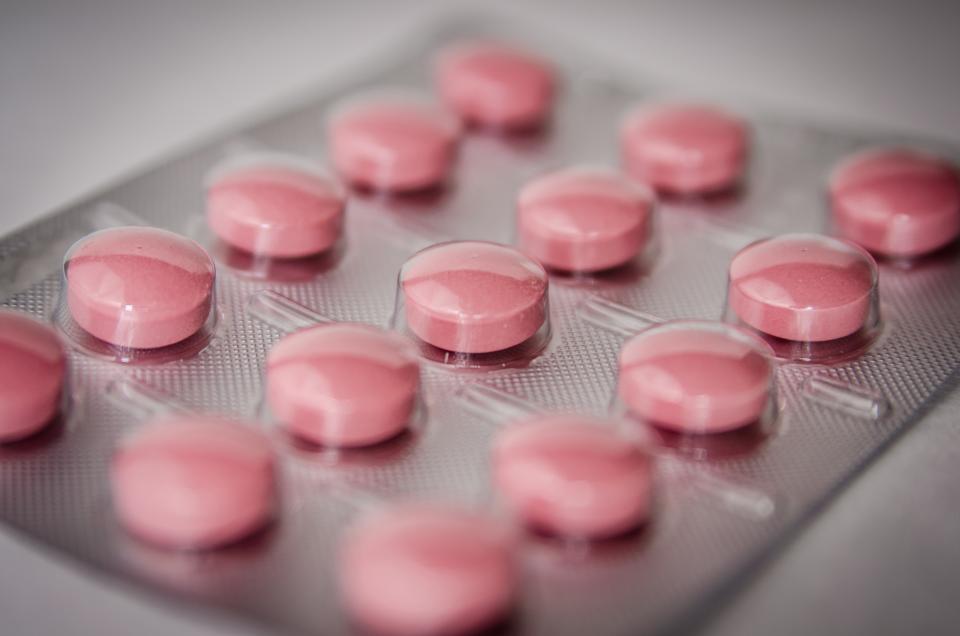
A. Drug-Drug Interactions
Enalapril has the potential to interact with various medications, which may impact its effectiveness or increase the likelihood of experiencing side effects. Some of these medications include potassium supplements or potassium-sparing diuretics, which can elevate the risk of hyperkalemia. Additionally, nonsteroidal anti-inflammatory drugs (NSAIDs) can reduce the blood pressure-lowering effect of Enalapril and potentially lead to kidney damage. Furthermore, other antihypertensive medications can enhance the blood pressure-lowering effect and heighten the risk of hypotension. To prevent potential interactions, you must have an open discussion with your healthcare provider about all medications you are taking, including over-the-counter drugs and supplements.
B. Drug-Food Interactions
The administration of Enalapril does not mandate any specific dietary requirements; it can be ingested with or without food according to personal preference. However, prudent caution should be exercised when consuming meals containing excessive amounts of salt as this could impede the intended reduction in blood pressure caused by Enalapril. Consequently, healthcare practitioners recommend adopting a low-sodium diet as an effective countermeasure.
C. Impact of Comorbid Conditions
Co-existing health conditions can influence the effectiveness and safety of Enalapril. An example is in patients with renal impairment, where the medication may accumulate and require dose adjustments. Similarly, individuals with liver disease may experience changes in the metabolism of Enalapril, which can affect its efficacy and safety profile.
VIII. Side Effects Associated with Enalapril
A. Common Side Effects
Enalapril, like any other medication, has potential side effects. These commonly include dizziness or lightheadedness when quickly changing position. It may also cause fatigue, weakness, or feeling unwell. Another possible side effect is a persistent and dry cough. Nausea or an upset stomach can also occur. These side effects are typically mild and tend to improve as the body adjusts to the medication. However, if they continue or worsen, seeking advice from a healthcare provider is recommended.
B. Rare but Serious Side Effects
Enalapril, although uncommon, can lead to severe side effects in certain patients. One potential concern is hyperkalemia, a condition where high potassium levels in the blood can contribute to significant heart issues. Additionally, there is a possibility of experiencing kidney problems such as reduced kidney function or even kidney failure. Another severe side effect that might occur is angioedema, characterized by swelling of the face, lips, tongue, or throat. This swelling can obstruct breathing and should be treated as a medical emergency with prompt attention and intervention.
C. Allergic Reactions and Hypersensitivity
Allergic reactions to Enalapril are not expected. However, they can still happen. Some possible symptoms include a rash, itching, severe dizziness, and difficulty breathing. Suppose any indications of an allergic reaction are observed. It is imperative to seek immediate medical assistance.
IX. Warnings and Contraindications for Enalapril
A. Absolute Contraindications
Enalapril should not be used in patients who have experienced angioedema due to previous treatment with an ACE inhibitor. It is also not recommended for individuals with a known hypersensitivity to Enalapril or any ingredient in the formulation. Pregnant women should avoid using Enalapril due to the risk of fetal harm. In these situations, it is advisable to explore other treatment options.
B. Relative Contraindications
Patients with renal impairment, kidney disease, liver disease, or heart conditions such as aortic stenosis or hypertrophic cardiomyopathy should exercise caution when using enalapril. In such situations, monitoring and making necessary dosage adjustments are essential.
C. Safety Warnings and Precautions
Patients should inform their healthcare provider about any medical conditions they may have before starting Enalapril. It is essential to mention whether they have kidney, liver, heart, or diabetes. Taking Enalapril requires regular monitoring of blood pressure: kidney function, and electrolyte levels.
D. Important Precautions when Taking Enalapril
For optimum safety, patients must avoid activities requiring heightened alertness until they clearly understand how Enalapril may affect them individually. This cautionary measure stems from the likelihood of encountering dizziness or lightheadedness as potential side effects of this medication. Furthermore, by ensuring sufficient hydration and moderating salt intake, patients can proactively diminish any prospective adverse consequences linked to using Enalapril.
X. Handling an Overdose of Enalapril
A. Recognizing Symptoms of Overdose
An overdose of Enalapril can have serious consequences. It is essential to take note of symptoms that might indicate an overdose, such as severe dizziness or fainting, weakness or fatigue, significantly low blood pressure (hypotension), and signs of hyperkalemia like muscle weakness or heart palpitations. If any of these symptoms arise, it is crucial to seek immediate medical assistance.
B. Immediate Steps to Take in Case of Overdose
If there is a suspicion of an Enalapril overdose, it is of utmost importance to promptly seek emergency medical help. It is not advisable to try treating the symptoms without the guidance of a professional. While waiting for medical assistance, it is wise to ensure the patient's comfort and, if feasible, keep an eye on their vital signs.
C. Long-term Management and Prognosis
The long-term management plan for dealing with an Enalapril overdose will heavily rely on two key factors: how severe the overdose was and what condition the patient's overall health is in. The potential course of treatment might involve administering intravenous fluids to combat issues like dehydration or hypotension while keeping a close eye on electrolyte irregularities—especially if the potassium levels are abnormally high. Swift intervention is crucial and timely action. The prognosis generally appears favorable following an Enalapril overdose.
XI. Enalapril Storage and Handling Precautions
A. Appropriate Storage Conditions
To ensure the proper storage of Enalapril. It is advised to keep it at room temperature and away from light and moisture. It is crucial to note that storing it in the bathroom is not recommended. In addition. As a precautionary measure to prevent accidental ingestion. It is essential to ensure that all medications are kept out of reach of children and pets.
B. Safety Measures During Handling and Administration
It is essential to be cautious of skin contact when dealing with Enalapril, particularly if the tablets have been broken or crushed. You must always take the necessary steps to wash your hands before and after giving the medication if you happen to miss a dose. It is advisable that you promptly take it once you recall. Unless it is nearing your next dose, you should not double the dosage to make up for a missed one.
C. Disposal Guidelines for Unused or Expired Enalapril
Disposing of unused or expired Enalapril responsibly and securely is imperative to prevent it from falling into the wrong hands or causing harm to the environment. Flushing it down the toilet or pouring it into a drain is not advisable. Instead, consider utilizing a medicine take-back program offered by your local pharmacy. Alternatively, you can refer to the disposal instructions on the medication label or patient information leaflet for appropriate guidance.














































